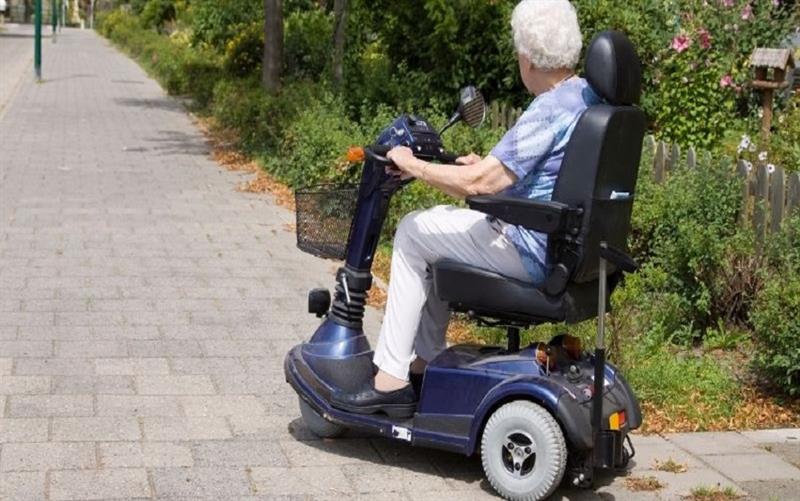
Mobility scooters have quickly established themselves as commonplace in many towns and cities. The elderly and those with impairments, who frequently have trouble getting around town, are helped by these cars. On the road, their sudden and quick general adoption might cause some concern.
We've created this practical guide to mobility scooter etiquette in order to address this issue. Understanding how to drive these vehicles safely can help you avoid a lot of difficulty. The first step toward a safer transit system for everyone is understanding what to anticipate from automobiles, pedestrians, and scooter users.
A mobility scooter may be helpful if you or a loved one has trouble walking due to arthritis, a muscular condition, or old age. Mobility scooters make it possible for those with mobility challenges to quickly achieve or restore independence while changing their daily lives.
Who can use a mobility scooter?
Let's start by putting the record straight. Mobility scooters are designed specifically for persons who have trouble getting around. Elderly folks and individuals with a range of disabilities are included.
Mobile scooters for the disabled are only allowed to be used by drivers in many nations, including Australia. In fact, drivers must have a "reasonable need" to operate these cars, according to Australian road regulations. A physical impairment or any other condition that makes it difficult to walk could be considered a reasonable requirement.
If a mobility scooter satisfies the legal definition, no driving license is needed to operate one. On the other hand, highly heavy or rapid scooters could need both a license and insurance.
If you're wanting to buy a mobility scooter for yourself or a loved one, this thorough guide on cutting-edge mobility solutions provides a full list of important guidelines for utilizing them.
The Most Important Guidelines for Using Mobility Scooters
Did you realize that mobility scooters are subject to certain traffic laws? Here are key guidelines for moving around securely and lawfully if you're new to mobility scooters or a close friend or family member is preparing to get one.
Your mobility scooter might need to be registered.
Legally, motorised wheelchairs and mobility scooters are considered Invalid Carriages. The 1988 Invalid Carriages on Highways Regulations Act, a rule established by the UK government, uses a class system to regulate the usage of mobility scooters. In the UK, there are now three categories of invalid carriage:
Class 1 - Restrictions on using manual wheelchairs on pavement
Class 2 - Unless there is no pavement, these mobility aids are for use on footpaths or footways. Their top speed limit is 4 mph, or 6 km/h.
Class 3 - These wheelchair-accessible vehicles have a speed limit of 8 mph (or 12 km/h) and can travel at speeds up to 4 mph (or 7 km/h). They are prepared for usage on footways, sidewalks, and roads.
Before being driven, a Class 3 mobility scooter must have the following features.
Scooters that are road legal but unfit for use indoors fall under the category of Class 3 invalid carriages. These scooters are subject to tighter laws and regulations than their class 2 equivalents.
The only class 3 invalid carriages that have these attributes are mobility scooters:
- a maximum unloaded weight of 150 kg
- a functional brake system
- indications of direction
- a trumpet and a rearview mirror
Driving a Mobility Scooter on Public Highways
Class 3 mobility scooters can be driven on all other roads but cannot be driven on cycle-only lanes, bus lanes, or highways. It is not advised to drive them on dual lanes with speed restrictions more than 50 mph (80 km/h).
If you want to travel on a dual carriageway, use an amber flashing light for visibility. In accordance with the Highway Code, drive in the direction of traffic and utilize your horn, indicators, and lights.
Roads for mobility scooters
Next, we'll give you a quick rundown of the most important mobility scooter driving laws. There are no universal standards, therefore keep in mind that the details could vary. Road regulations for mobility scooters vary per nation.
- Mobility scooters cannot go faster than 10 km/h (6.2 mph) on flat ground.
- Motor vehicles are not mobile scooters. Even though you are a pedestrian in theory, it is still forbidden to use the machine while intoxicated.
- A physical impairment or reduced mobility must exist for you to have a valid reason to use a wheelchair.
- You must adhere to all pedestrian traffic regulations. This involves avoiding creating traffic hazard (by swerving in front of an approaching vehicle) or obstructing the routes.
- Take the quickest routes available to cross the street. Wait for the light to turn green before beginning to cross the street at a pedestrian crossing.
- Avoid roundabouts, especially if you need to cross a road. If you can't help it, stay on the curb until all traffic has stopped.